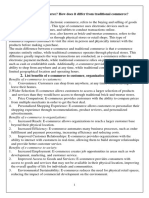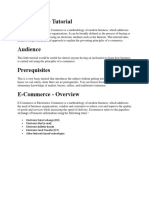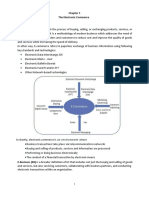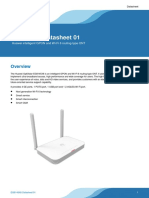0% found this document useful (0 votes)
36 views14 pagesE-Commerce Unit 1 Notes
The document provides a comprehensive overview of electronic commerce (E-commerce), detailing its scope, characteristics, and the impact it has on businesses and consumers. It covers various aspects including value chains, security threats, electronic payment systems, and the differences between traditional and electronic commerce. Additionally, it discusses the benefits and challenges of E-commerce, as well as its applications in direct marketing and the role of electronic marketplaces.
Uploaded by
preeti1801negiCopyright
© © All Rights Reserved
We take content rights seriously. If you suspect this is your content, claim it here.
Available Formats
Download as PDF, TXT or read online on Scribd
0% found this document useful (0 votes)
36 views14 pagesE-Commerce Unit 1 Notes
The document provides a comprehensive overview of electronic commerce (E-commerce), detailing its scope, characteristics, and the impact it has on businesses and consumers. It covers various aspects including value chains, security threats, electronic payment systems, and the differences between traditional and electronic commerce. Additionally, it discusses the benefits and challenges of E-commerce, as well as its applications in direct marketing and the role of electronic marketplaces.
Uploaded by
preeti1801negiCopyright
© © All Rights Reserved
We take content rights seriously. If you suspect this is your content, claim it here.
Available Formats
Download as PDF, TXT or read online on Scribd
/ 14





















































































